Natural Vegetation and Wildlife - Solutions
CBSE Class–VII Social Science
NCERT Solutions
Geography Chapter-6
Natural Vegetation and Wild Life
Q1. Answer the following questions.
- Which are the two factors on which the growth of vegetation mostly depends?
- Which are the three broad categories of natural vegetation?
- Name the two hardwood trees commonly found in the tropical evergreen forest.
- In which part of the world tropical deciduous forest is found?
- In which climatic conditions are citrus fruits cultivated?
- Mention the use of the coniferous forest.
- In which part of the world is seasonal grassland found?
Answers:
- Temperature and Moisture are the two factors on which the growth of vegetation mostly depends. It also depends on factors like slope and thickness of soil.
The three broad categories of natural vegetation are: 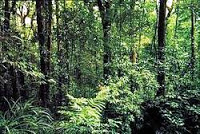
(a) Forest: Which grow where temperature and rainfall are plentiful to support a tree depending upon these factors, dense and open forest are grown. 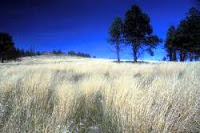
(b) Grassland: Which grow in the region of moderate rain. 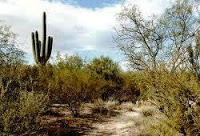
(c) Thorny shrubs and scrubs: Thorny shrubs and shrubs grow in the dry region. - Rosewood, Mahogany and Ebony are hardwood trees that are found in tropical evergreen forests.
- Tropical Deciduous forests are the monsoon forests found in the large part of India, northern Australia and in Central America.
- Climatic conditions required for cultivation of Citrus fruits:
- Orange, figs, olives and grapes are Citrus fruits.
- Hot dry summers and mild rainy winters- Such type of Climatic conditions required for cultivation of Citrus fruits
- The uses of coniferous forest are:
- The Wood of these trees are very useful for making pulp, which is useful for manufacturing paper, newsprint and cardboard
- Matchboxes and packing boxes are also made from softwood.
- Wood of these forests is also used for making decorative pieces.
- The wood of these forests is also used for making particle board and plywood
- Temperate grasslands are also known as Seasonal grasslands These are found in the mid- latitudinal zones and in the interior parts of the continents.
Q2. Tick the correct answer:
(i) Mosses and lichens are found in:
(a) Decorative vegetation (b) Tropical evergreen forest (c) Tundra vegetation
Ans: (c) Tundra vegetation.
(ii) Thorny bushes are found in:
(a) Hot and humid tropical climate (b) Hot and dry desert climate (c) Cold polar climate
Ans: (b) Hot and dry desert climate.
(iii) In the tropical evergreen forest, one of the common animals is:
(a) Monkey (b) Giraffe (c) Camel
Ans: (a) Monkey
(iv) One important variety of coniferous forest is:
(a) Rosewood (b) Pine (c) Teak
Ans: (b) Pine
(v) Steppe grassland is found in:
(a) S.Africa (b) Australia (c) Russia
Ans: (c) Russia.
Q3. Match the following:
| (i) | Walrus | (a) | Softwood tree |
| (ii) | Cedar | (b) | An animal of the tropical deciduous forest |
| (iii) | Olives | (c) | A polar animal |
| (iv) | Elephants | (d) | Temperate grassland in Australia |
| (v) | Campos | (e) | A citrus fruit |
| (vi) | Downs | (f) | Tropical grassland of Brazil. |
Ans:
| (i) | Walrus | (c) | A polar animal. |
| (ii) | Cedar | (a) | Softwood tree |
| (iii) | Olives | (e) | A citrus fruit. |
| (iv) | Elephants | (b) | An animal's tropical deciduous forest. |
| (v) | Campos | (f) | Tropical grassland of Brazil |
| (vi) | Downs | (d) | Temperate grassland in Australia |
Q4. Give reasons.
(i) The animals in polar region have thick fur and thick skin.
Ans: The animals in polar region have thick fur and thick skin to protect themselves from the cold climatic conditions.
(ii) Tropical deciduous trees shed their leaves in the dry season.
Ans: Tropical deciduous trees shed their leaves in the dry season to conserve water and survive in harsh weather conditions.
(iii)The type and thickness of vegetation changes from place to place.
Ans: The type and thickness of vegetation changes from place to place, because of the variation in temperature, moisture, altitude, rainfall and thickness of soil.
Q5. For fun.
(i) Collect pictures and photographs of forests and grasslands of different parts of the world. Write one sentence below each picture.
(ii) Make a collage of rainforest, grassland and coniferous forests.
Answers:
| Forests and Grasslands | Description | ||
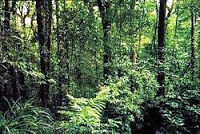 | Tropical Evergreen Forests :
| ||
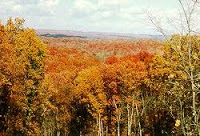 | Tropical Deciduous Forests:
| ||
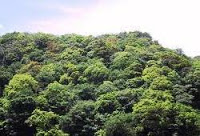 | Temperate Evergreen Forests:
| ||
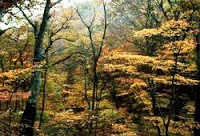 | Temperate Deciduous Forests:
| ||
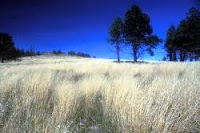 | Grasslands:
| ||
 | Coniferous Forest:
| ||
In text Questions
Page No. 39
Q. Now can you tell why Salima saw changes in the natural vegetation as she climbed higher and higher? What type of vegetation did she see in the Himalayas starting with the foothills and going to the higher altitudes?
Ans: Salima saw changes in the natural vegetation as she climbed higher and higher due to change in altitude, and related climatic conditions such as temperature, precipitation, low air density. A form of soil also changes as she climbed higher and higher.
- At the foothills, Salima saw deep jungles of Sal and Teak. In the lower part of the foothills region she saw short grassy areas, bushes and deciduous trees. She also saw broad leaved forests.
- As she climbed higher, she could see coniferous trees such as Pines on the mountain slopes.
- And at higher altitudes, she found land was covered with short grass and snow. She also feel that this place was extremely cold. The growth of vegetation was very limited, only mosses, lichens and very small shrubs she found here.
